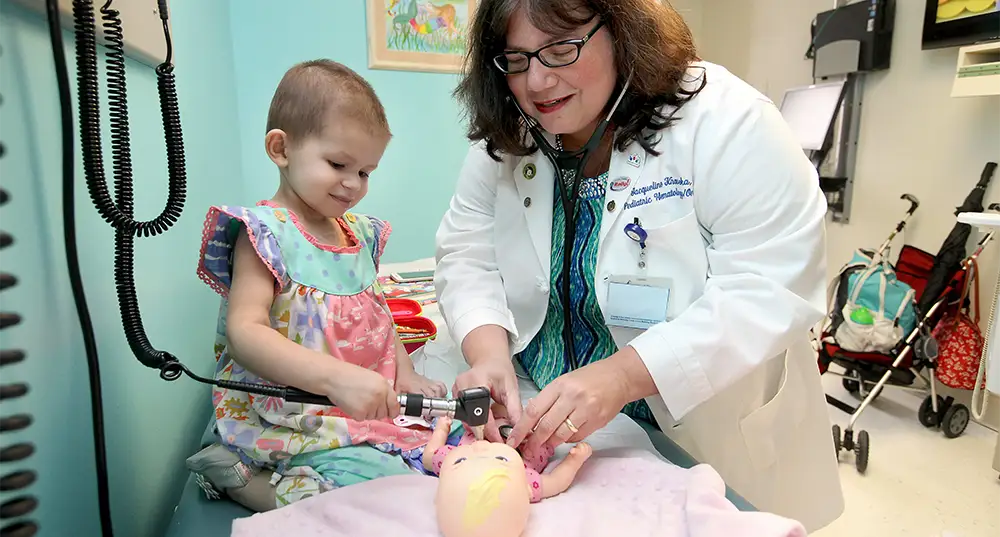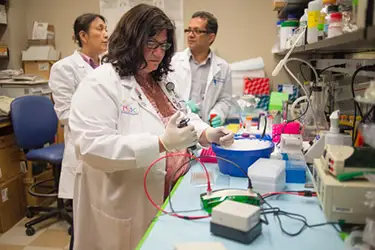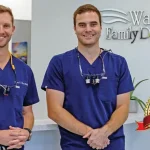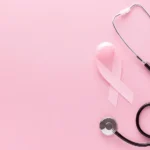
No childhood cancer diagnosis is easy, but neuroblastoma is especially heart-wrenching. This rare cancer develops from immature nerve cells and most often affects children under the age of 5. It’s aggressive and emotionally devastating for families.
Amid the uncertainty, one thing is clear: progress is happening, and much of that is thanks to researchers like Dr. Jacqueline Kraveka, DO, of the Medical University of South Carolina (MUSC). “Neuroblastoma is one of the most aggressive pediatric tumors that we see. It’s one of the most common solid tumors we see, but also has one of the worst prognoses,” said Dr. Kraveka.

Neuroblastoma originates as tumors in the peripheral nervous system. It can spread to the bones, bone marrow and other parts of the body. Its symptoms are often subtle or mistaken for common childhood ailments: fatigue, constipation, limping, bone pain or a noticeable abdominal mass.
“Sometimes it’s discovered by accident,” explained Dr. Kraveka. “A child may go in for a routine check-up and the pediatrician feels a mass. Other times, abnormal bloodwork or signs of bone pain trigger further tests.”
The disease is classified as low, intermediate or high risk. Children with high-risk neuroblastoma face an especially difficult road, requiring aggressive treatment and long-term follow-up care.
Dr. Kraveka’s journey with neuroblastoma began during her pediatric residency in Miami, when she treated a patient who relapsed with neuroblastoma after a bone marrow transplant. She studied the neuroblastoma that grew from his marrow cells, and the experience left a lasting impression. “I knew then that I had to be involved in this fight,” she recounted.
Dr. Kraveka has now been a faculty member at MUSC for over 25 years, specializing in pediatric oncology. She leads a research lab and runs clinical trials focused on neuroblastoma. Her work has gained national recognition through her collaboration with the Beat Childhood Cancer Research Consortium, a network of institutions working together to improve outcomes for children.
One of Dr. Kraveka’s most groundbreaking contributions is her work on eflornithine, recently approved by the FDA under the name IWILFIN. This medication is the first of its kind designed to prevent relapse in children with high-risk neuroblastoma.
“IWILFIN gives patients an increased chance of long-term survival,” she said. “Before, about 50% of high-risk patients would relapse. Now, more than 85% who finish therapy with IWILFIN stay cancer-free.”
This milestone is particularly meaningful in a treatment plan that typically includes intense chemotherapy, surgery, stem cell transplants, radiation and immunotherapy. It’s a grueling regimen with lasting side effects like hearing loss, heart problems, growth delays, dental issues and possible infertility.
Beyond the physical toll, neuroblastoma places enormous strain on families. The uncertainty, extended hospital stays and fear of relapse can be overwhelming. Survivorship requires medical follow-ups, and often mental health care and developmental monitoring.
Dr. Kraveka and her team continue to collaborate with a network of researchers across the country with Beat Childhood Cancer, studying immunotherapies and running trials to improve the odds for those with high-risk neuroblastoma, but one major obstacle that remains is funding. Dr. Kraveka explained that only 4% of the National Cancer Institute’s budget goes to pediatric cancer research. With such limited support, breakthroughs like IWILFIN depend heavily on philanthropy and advocacy.
That’s where organizations like the McConnell Foundation step in. Based in Charleston, the foundation was started in 2021 by a family whose child, Bodhi, was cured from neuroblastoma. Every dollar they collect goes directly to Dr. Kraveka’s lab at MUSC to support childhood cancer research.
They will hold their biggest fundraising event of the year, the Shining Stars Gala, on Sept. 20. It’s a chance for the community to raise funds and fuel the next generation of cancer treatments.
Thanks to decades of hard work and collaboration, survival rates for high-risk neuroblastoma have risen from 20% to nearly 60%. And for those who complete treatment and take IWILFIN, long-term survival now exceeds 85%.
“There’s still a long way to go, but we’ve also come a long way. We have witnessed a big jump in survival rates,” noted Dr. Kraveka. “Every child deserves a chance at a healthy future. I’m grateful to collaborate with others across the country to make even bigger impacts for children with neuroblastoma.”
With leaders like Dr. Kraveka and committed communities behind them, the fight against neuroblastoma is stronger than ever.
By Anne Toole



Leave a Reply